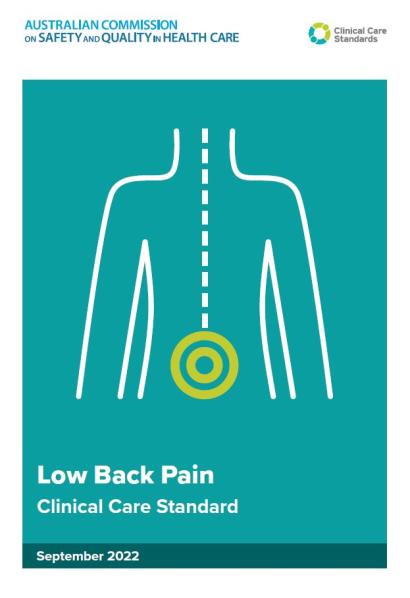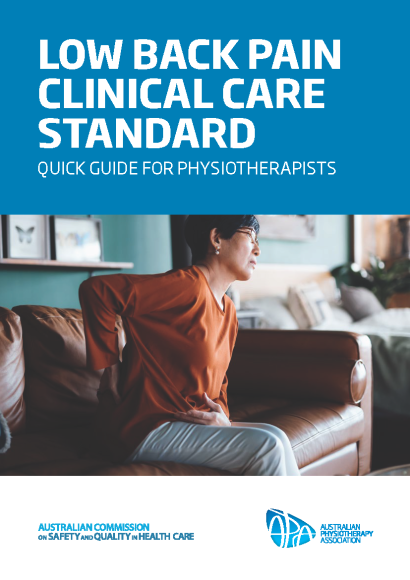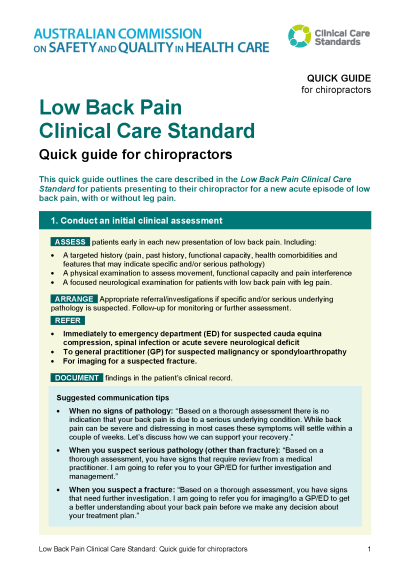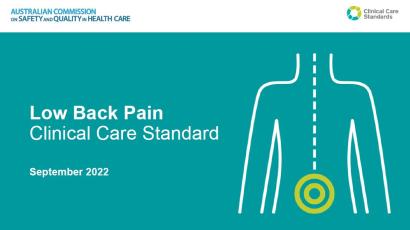Low Back Pain Clinical Care Standard
The Low Back Pain Clinical Care Standard aims to improve the early assessment, management, review and appropriate referral of people with this common health condition.
Overview
Low back pain is a common form of back problem that affects most people at some point in their lives1. As well as pain, it often leads to psychological distress and poorer quality of life2,3.4 and is a leading cause of disability worldwide5.
The Low Back Pain Clinical Care Standard provides a road map for healthcare practitioners to help patients manage low back pain episodes early and reduce their chance of ongoing problems.
The standard has the support of several clinical groups calling for a common evidence-based approach to low back pain and has been endorsed widely.
Contents and resources
The Low Back Pain Clinical Care Standard includes:
- Eight quality statements describing the care that should be provided
- A set of indicators to support monitoring and quality improvement
View the complete list of implementation resources or see what's available for consumers, clinicians, healthcare services and Primary Health Networks.
Quick guides
For Physiotherapists
The Commission has partnered with the Australian Physiotherapy Association to create a Quick Guide for Physiotherapists on the Low Back Pain Clinical Care Standard. The resource provides an evidence-based approach to the early assessment, management, review and referral of patients with low back pain, who present with a new acute episode. Download the Quick guide for simple guidance and communication tips for physiotherapists.
For Chiropractors
The Commission has has created a Quick Guide for Chiropractors. This guide outlines the care described in the Low Back Pain Clinical Care Standard for patients presenting to their chiropractor for a new acute episode of low back pain, with or without leg pain. Download the quick guide for simple guidance and communication tips for chiropractors.
Primary Health Network resources
- Implementation Guide for PHNs
Activities and resources for primary care including our new GP Education Module (accessible to RACGP members).
- Video resources for clinicians
Brief educational videos for clinicians on key aspects of the standard including an introduction to the standard, use of imaging and medicines, and psychosocial aspects of pain.
Launch video and communications resources
See how experts in pain management, emergency medicine, physiotherapy and general practice explain the Low Back Pain Clinical Care Standard at its launch on 1 September 2022.
Communications resources
Show your support for the clinical care standard by downloading and sharing the content on your website, social networks or within your health service organisation.
To help you share and promote the clinical care standard within your networks, a communications kit and launch presentation slides are available for download.
Background and development of the standard
Contact us
If you have questions about this clinical care standard, please email ccs@safetyandquality.gov.au.
For future updates on standards due to be launched and out for consultation, follow us on X (Twitter) or subscribe to our eNewsletters.




